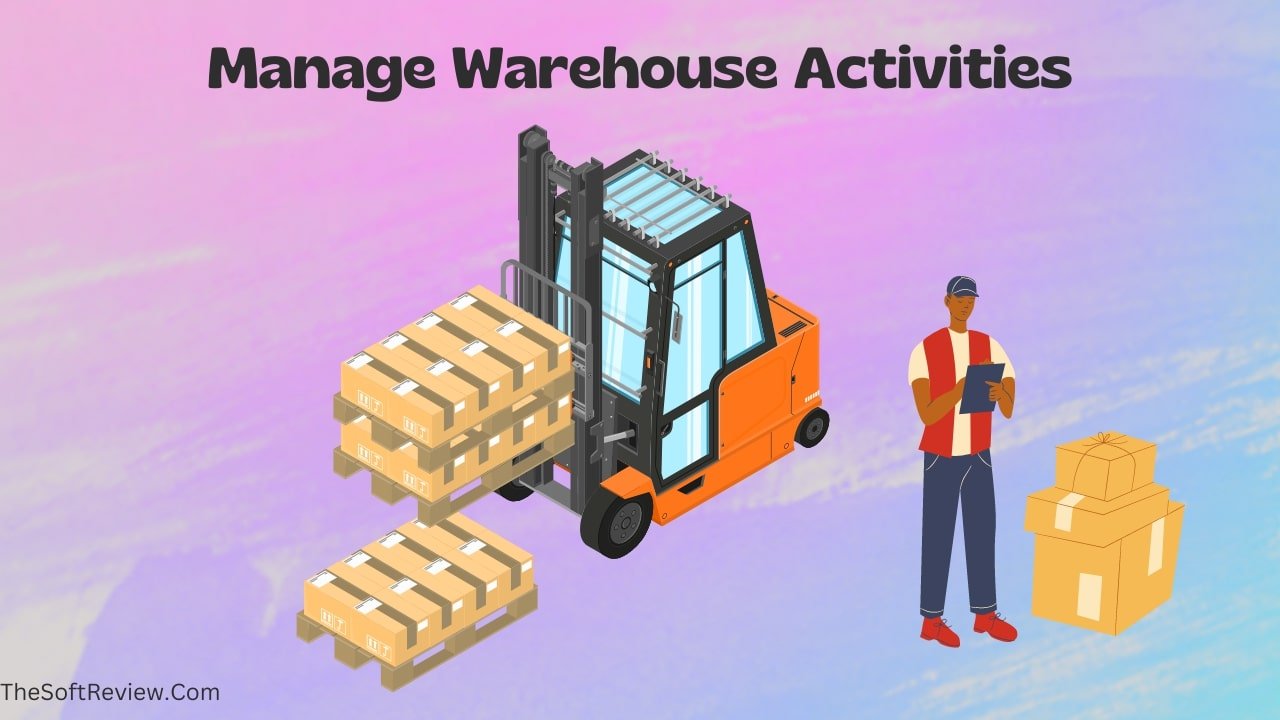
What is Supply Chain Management & How Does the System Work?

Have you ever pondered how raw wheat is transferred into biscuits and delivered to your nearby store or home?
Supply chain management is the process behind all the activities, transforming raw materials into usable products.
To clarify, here we will examine the critical aspects of supply chain management so you can learn how the system works and scale your business.
What is Supply Chain Management, And How Does Supply Chain Management Work?
Supply chain management is a logical approach to managing all the tasks associated with manufacturing and distributing a product or goods. It is a set of activities businesses practice to collect raw materials, transform them into usable products, and distribute them to the consumer.
Let’s look at the five main components of SCM to understand how supply chain management works:
1. Supply Chain Planning:

The planning stage is the lifeblood of supply chain management. In this stage, a business has to create a comprehensive plan to outline how the supply chain system will work.
For a smartphone manufacturing company, operation planning involves:
- Forecasting a product’s demand and analyzing the revenue possibility
- Determining from where to collect the raw materials and other requirements
- Advanced marketing automation tools.
- And provide customer support
2. Sourcing and Procurement:

Once a company is ready with the plan, the sourcing and procurement stage comes up. In this stage, supply chain professionals accumulate the raw materials or other goods required to create the product.
Sourcing involves identifying suppliers who can provide the raw materials and services. The procurement process includes the following:
- Analyzing the actual need for materials or services
- Identifying the best potential suppliers
- Negotiating contracts
- Managing relationships with suppliers (supplier management), ensuring that they meet quality, cost, and delivery requirements
3. Product Manufacturing Process:

In manufacturing, a company obtains all the resources needed and is ready to create the product or service. This phase includes:
- Scheduling production time
- Manufacturing the product at scale
- Reducing wastage
- Workforce management and quality assurance
4. Warehouse Management:

In this stage, a company has created the final product, stored it in the warehouse, and is ready to deliver it to the customers! Key warehouse activities include;
- Inventory management activities like managing stock levels for incoming and outgoing goods
- Ensuring all the products are stored and handled safely
- Pick, pack, and ship a product when an order comes
5. Returns and Customer Service:

After a company completes a sale, it is essential to support the customers so they return. This phase involves tasks like managing after-sales services such as:
- Help customers with product information, answering inquiries
- Resolve returns, repairs, and maintenance claims
- Logistics process for returned products, including product inspection, repair, disposal, and reselling
Once a company ensures the five components, they have an efficient supply chain system, and this is what the supply chain management process is.
Before we move forward, let’s examine why good supply chain management is vital for a business.
How Important Is Effective Supply Chain Management to an Organization?
1. Meeting Customer Expectations:
The main goal of the supply chain process is to produce what customers are looking for at the right price. As the supply chain involves managing resources, manufacturing facilities, distribution, and logistics systems, improving these processes can significantly impact an organization’s production costs.
So, when a company knows what to produce, optimize these processes and reduce production costs without losing the quality and meet the customer demand.
2. Cost Management and Competitive Advantage:
Supply chain management professionals can scale production, minimize waste, reduce inventory errors, and streamline distribution processes to cut the cost of the product. It can help organizations improve profit margins and remain competitive in the market.
For instance, effective procurement management can help organizations identify suppliers that offer the best prices and quality than their competitors to cut the production cost even more!
3. Ensuring Quality Products:
Quality control is essential to the SCM system, ensuring the final product is high quality. Organizations can improve customer satisfaction and protect their brand reputation by establishing a quality standard and monitoring that all suppliers, manufacturers, and distributors meet.
For instance, an efficient SCM system can help supply chain managers monitor supplier performance, track product quality, and identify quality issues to prevent defects from reaching the customer.
4. Improved Customer Experience
A reliable and efficient supply chain can enhance customer satisfaction by establishing a support cell to ensure the customer gets support when needed.
Whether a customer wants to know any information about a product or wants to return what they bought, the support team would actively listen to the customers. And happy customers means free marketing with a high percentage of a return customer.
5. Risk Management:
The supply chain can be vulnerable to disruptions, such as natural disasters, supplier bankruptcies, or geopolitical events. Good supply chain management skills can help a supply chain manager identify and mitigate potential risks by diversifying suppliers, taking insurance, and adopting other plans.
Now let’s look at some of the barriers to efficient supply chain management, and then we will talk about how to overcome them:
What Are the Barriers to Managing the Supply Chain Effectively?
A. Improper Planning and Lacks in Execution:
Supply chain management involves complex processes like sourcing, procurement, manufacturing, warehouse, and customer support. Each stage also has a set of activities. So, if a company does not plan activities for each step or even fails to execute the plan, in that case, the whole supply chain system will be disrupted.
B. Lack of Resources and skilled Workers:
Companies often struggle with the budget to invest in the latest technology or hire skilled team members to improve the entire supply chain performance. And if a company lacks resources, it can head to delays in production and poor quality of goods and services, resulting in customer dissatisfaction.
C. Inefficient Communication:
Communication between suppliers, manufacturers, customers, and other stakeholders is essential in the SCM system. Sometimes, companies fail to create this communication bridge for a lack of communication skills or skip this part.
Without proper communication, the flow of information can be slow and inaccurate, leading to delays in the supply chain and dissatisfied customers.
D. Lack of Data Transparency and Visibility
A lack of data transparency and visibility hinders effective supply chain management. Supply chain managers often forget or lack to establish real-time data visibility and transparency, so it becomes difficult to manage risks and respond quickly to changes in demand.
E. Supply Chain Disruptions:
Unwilling disruptions such as natural disasters, political instability, and global pandemics impact the flow of the supply chain. These disruptions can cause shortages, delays, and increased costs, making it challenging to manage the supply chain.
Now let’s talk about some tips so that you can overcome these issues and improve your supply chain management process:
How Can Small Businesses Improve Their Supply Chains?
1. Understand Your Supply Chain and Adopt a Perfect SCM Model:
The first step is to understand how you manage your supply chain. You need to focus on strategic planning, identify where your materials come from, how they move through your supply chain, and where potential bottlenecks can be.
After that, research different SCM models, consult with other experts in the industry, and adopt a supply chain management model that fits your business.
2. Invest and Implement Technology:
The second step is streamlining the SCM process by investing in and adopting appropriate technology. Significant investment can go into adopting software or hardware solutions like ERP or Pick Pack and Ship software to help you streamline inventory, warehouse, and shipping processes.
It can also involve hiring skilled staff and using cloud-based data storage and analytics tools to improve supply chain operations.
3. Establishing Clear Communication and Data Visibility:
A business should establish clear communication channels between suppliers, manufacturers, customers, and other stakeholders to ensure that information is shared quickly and accurately. Adopting an ERP system would help to establish real-time communication via phone calls or SMS.
With a project management software integration, all your team, stakeholders, and supplier will get a shared dashboard for joint planning and collaborative problem-solving.
4. Automate Manual Processes:
Large companies like Amazon have already adopted automation systems like robots to manage their supply chain activities. And if you have the capacity, you can also adopt automation to reduce human errors, save time, and reduce costs.
5. Investing in Training:
A skilled workforce with moral responsibilities is critical to effective supply chain management and improving customer service. Therefore, businesses should train their staff on the latest supply chain trends, technologies, and best practices to remain competitive.
Small businesses can improve their entire process of supply chain management and maximize profits by taking these steps. With the right strategies, companies will meet customer demands effectively and efficiently while reducing costs and increasing profitability.
Final Words
Supply chain management is a study of improving the way a business produces and delivers its products. And having skills in each aspect of SCM would help a business cut production and operating costs, ensure quality, and satisfy its customers.
Therefore, it is essential to learn the critical aspects of supply chain management and cope with the industry trend to stay ahead of the competition.
Frequently Asked Questions
1. Should I Study Supply Chain Management? Is Supply Chain Management In Demand?
Yes, studying supply chain management is an ideal choice if you want to work as a supply chain manager. The skill of the supply chain is in high demand in many industries, like manufacturing, retail, healthcare, and many others. And we expect the need for skilled supply chain managers to grow in the coming years.
2. Where To Study Supply Chain Management?
You can join online courses to gather skills in supply chain management. There are many online courses and certifications available. Coursera, edX, and Udemy are popular online learning platforms.
You can also join bachelor’s or master’s degree programs in supply chain management at many universities and colleges, such as Georgia Institute of Technology and Penn State University.
3. Will Supply Chain Management Be Automated?
Some supply chain aspects, like managing inventory and warehouse operations, are already automated using robotics and artificial intelligence. And in the years ahead, blockchain, mixed reality, and other technologies will change the supply chain landscape.
But, human oversight and decision-making capability will always be in demand in the supply chain management field.




















